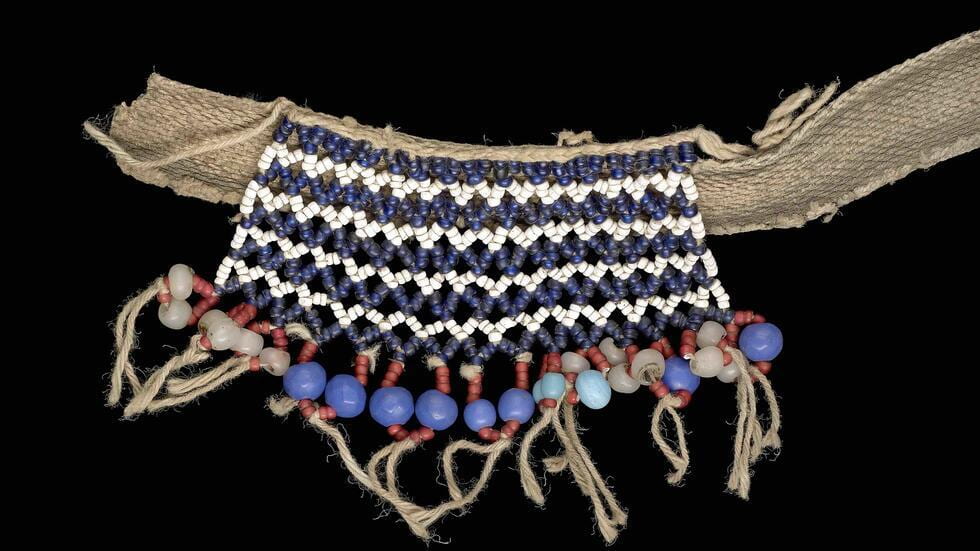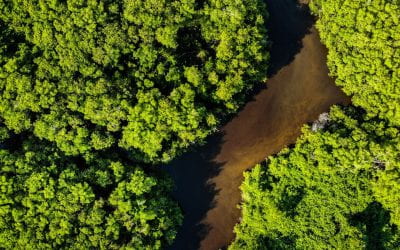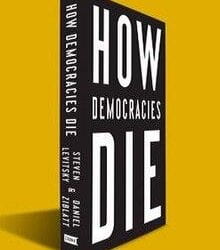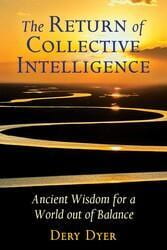Circuits of Glass
A Century of Art and Trade in the Brazilian Amazon
In 1909, Emilia Snethlage, a German ornithologist working for the Museu Paraense Emílio Goeldi, arrived at the Curuá River in the eastern Brazilian Amazon. Just five years earlier, Snethlage (1868-1929) had received a Ph.D. from Freiburg University at a time when women were discouraged from pursuing scientific careers.
Having moved to Brazil to study the Amazonian fauna, she was venturing on the first scientific exploration of the Curuá, “a trip that, with low expenses, promised splendid results.” (Snethlage 1913, 49). Two months earlier, she had taken a steamboat from the mouth of the Amazon to Vitória do Xingu on the Lower Xingu River and crossed a portage road to Forte Ambé, the embryo of what is now the city of Altamira. There, she joined a trading expedition that paddled up the Xingu and Iriri rivers to arrive at the Curuá River, home to the Kuruaya people. At the border between the last rubber estates and indigenous country, she was greeted by members of the Kuruaya group, her first encounter with indigenous people living in the forest.

The Kuruaya have been making beadwork for more than a century. This piece was sold to Emilie Snethlage during her 1914 excursion to the Curuá River and is presently stored in Berlin. Staatliche Museen zu Berlin, Ethnologisches Museum, V B 8922. Photo by Claudia Obrocki.
She noticed that the Kuruaya emissaries were covered in beautiful accessories, crafted from seeds, animal teeth and glass beads. “Their necks are wrapped in numerous strings of [blue and white] beads, many times forming necklaces as thick as an arm. Someone’s wealth is displayed proportionally to the quantity of beads in which he is covered. The chest will sometimes disappear under the necklaces made with beads, vegetable shells and teeth of monkeys and beasts.” (1913, 61) These tiny glass beads, also known as seed beads or rocailles, were highly valued for their beauty among Amerindians groups of the Amazon.
Glass beads travelled through an exchange network that connected the Amazon to Europe. They were mostly manufactured in Bohemia, then a part of the Austro-Hungarian empire, a region that is still home to the most renowned bead factories in the world. Portuguese traders imported them to Belém, the largest port and gateway to the Amazon forest. In the 1900s, the Amazon was at the height of its rubber boom, when industrial demand for rubber sent prices up and rubber trails were opened throughout the forest, the only ecosystem where the rubber tree (hevea brasiliensis) naturally occurs. Colonizers established rubber estates in areas previously occupied by indigenous populations, pushing them upriver to places such as the Curuá. As they resettled in their respective territories, colonizers and the Kuruaya began to barter.
The trading caravan that Snethlage joined was headed to the Curuá to acquire river vessels employed in the rubber economy. The Kuruaya skillfully built small vessels called ubás, used to circulate people and goods between the rubber estates and the trading centers downstream. For their part, the Kuruaya coveted machetes and axes made from steel and, most of all, glass beads, from which they made the body adornments that Snethlage admired.
To the colonizers, the Bohemian glass beads were a commodity like rubber or steel tools. To the Kuruaya, however, the seed beads had a value intrinsic to their beauty. They saw their potential to be turned into jewelry and to display wealth. At the interface of a colonial and an Amerindian world, the glass beads were at the same time a commodity and a representation of value itself. In other words, they were also a type of currency.
Emilia Snethlage had brought with her some glass beads, with which she hoped to hire Kuruaya guides. The goal of her trip was to achieve a feat no Western scientist had accomplished before: an overland crossing from the Curuá River, in the Xingu River basin, to the Jamanxin River, which flows into the Tapajós basin. There were no maps of this uncharted territory and she depended on local knowledge. She brought red beads, which she was disappointed to find “were neither the right color or form, however, they were still accepted by my guides as remuneration, even if without much enthusiasm. The old Maitumá and his wife even wore them some days.” (Snethlage 1910, 616)
Snethlage successfully hired seven members of the Kuruaya group; João and his wife Parimarú, Maitumá and his two wives Comaicarú and Umarú, Topá and “another Kuruaya whose name I never learned” (1913, 72). They departed from the left bank of the Curuá on August 28th, 1909, on a journey that Snethlage predicted would end in about seven days, but actually lasted 26.
It was a difficult trip. The guides were less familiar with that region than she expected. They ran out of cassava flour after the first week and the only food they had available were roots, wild honey and small animals that they collected along the way. Only one of the guides, João, could communicate with Snethlage in rudimentary Portuguese, with simple words such as “sleep” and “eat.” A week into the trip, she started to show malaria symptoms.
Having faced such adversities together, Snethlage developed a deep affection for her companions. “They could have easily abandoned me on the way, all they needed to say to those who ask was that I had died —something made even more believable, since my companions in the Curuá knew I was suffering from malaria; but they carried me along, despite all the inconveniences.(…) I learned to love and appreciate the Kuruaya Indians as essentially good people.”(1913, 89) Snethlage was a biologist by training, but as the improbable troupe arrived in the first settlements of Jamanxin River at the end of a grueling 26-day journey, her interest had shifted from Amazonian birds to the “good people” living in the forest.
Five years later, in 1914, Snethlage returned to the Curuá River. At the eve of World War I, when German imperial ambitions were at their peak, the Ethnological Museum in Berlin commissioned her to conduct ethnographic fieldwork among the Kuruaya. She was trained by correspondence on how to gather data on language, ritual and religion. She was also tasked to send back to Germany a collection of material culture pertaining to the Kuruaya and Xipaya, another indigenous group of the region. Although the war delayed delivery of the items, she eventually sent a collection of 137 objects, approximately half of which are body adornments. Among them, many are made from glass beads. This collection is kept at the Ethnological Museum Berlin, sitting just 120 miles from the Bohemian factories that originally made the glass beads.
Samara’s Glass Beads

A necklace made by Samara Curuáia, a resident of Irinapãne in the Curuá River. Photo by Vinicius Furuie
Samara Curuáia lives with her three-year-old son in Irinapãne, the largest Kuruaya village and the furthest up the Curuá River. At the time we first met, she had travelled by boat the 280 miles between her village and Altamira to visit her mother. I sent an audio message saying that I was interested in her beadwork and she invited me to her mother’s house, located in the outskirts of the city. As is usual in Brazil, we treat each other by our first names, as last names are reserved for formal documents.
Samara’s mother lives in a pre-fabricated unit in one of the housing projects recently built by the Belo Monte dam operator. The Belo Monte dam is located in the Xingu river just outside Altamira. It is the largest hydroelectric project undertaken in the Amazon, the world’s third largest dam in hydroelectric capacity costing more than and mobilizing 35,000 workers at the height of construction. The project affected the whole region, unleashing a boom in demand for consumer goods, anything from timber, to fish and illegal drugs. Since 2010, when construction started, Altamira has topped the Brazilian charts of deforestation and urban violence. In 2019, the region was one of the epicenters of the wave of human-induced forest fires that swept the Amazon. The lake created by the dam displaced an estimated 40,000 people living in areas close to the Xingu River, most of them resettled in neighborhoods called RUCs (Reassentamento Urbano Coletivo or Collective Urban Resettlement).
At first, the promise of new houses, built in spacious neighborhoods equipped with schools and health centers, appealed to many of the evicted. But it soon became clear that the RUCs were mired in problems. Bad planning, cost-cutting and rushed execution resulted in low-quality houses on the outskirts of the city, several miles away from the river that supplied fish and work to many of the relocated. In a blatant disregard for local customs, the houses were not prepared for hanging hammocks, the most common furnishing in the Amazon.
But as Samara led me into her mother’s plot in RUC Água Azul through a side corridor lined with neatly kept cocoa trees just starting to bear fruit, the space felt attractive. Coconut and guava trees grew vigorously in the backyard. Careful gardening had transformed the sterile architecture into a home tucked between identical houses on identical streets.
We entered a porch-enclosed area at the back of the house, protected from the sun, rain and the curious eyes of strangers. Samara smiled and began to talk enthusiastically about her artwork.
“I love trying new designs, making new kinds of jewelry. I make some for myself, and a lot of people also ask me to make jewelry for them. It makes me feel good,” she said. She gets paid for making the pieces, but rather than a job, she sees it as a calling. Working with the tiny rocailles takes a toll on the artist’s health, though. “I like doing it, but I can’t do it every day. It takes me about a day of work, maybe two, to make a small piece, a necklace for example. But I can’t work more than three days in a row, my head and my eyes begin to hurt.” The size of the beads, sometimes as small as 1.5 millimeter in diameter, makes them incredibly versatile, but also hard on the body.
Her face brightens as she remembers artifacts she would like to show me. She brings out a plastic bag and takes out a few pieces, one by one. “This necklace originally went with an anklet. I wish you could see them together! I gave the anklet to a friend, though, let me check if she has any pictures of it,” she said, while texting her friend. As she scrolls through her phone, I take a closer look at the objects. Little round flowers made of red, black and white beads adorn necklaces and bracelets. Each detail seems to require a lot of patience and work.
Her phone chimes. She shows me the picture of herself and another woman, both adorned from head to toe with bead and feather accessories. “My friend is the vice chief of the village. She asks me to make her jewelry. We were in a festival, preparing to dance. Can you see the accessories on her feet?” I zoom into what looks like gladiator sandals, beads swirling up her shins. They are made for dancing, the undersides of the feet remain bare to better stomp the floor. “That is my original design! They are completely made of beads. It took forever to make them, but don’t they look beautiful?”
I take out some images of the jewelry that Emilia Snethlage collected more than a century ago and show it to Samara, retelling the story of the expedition. She notices how the artifacts from a century ago are very similar to those they still make in the village: “I know how to make that type of weave! We still use it. And the beads… well, now we don’t use blue as much, we prefer brighter colors nowadays.” Samara reinvents the traditional designs but her beadwork continues a tradition of body adornment. Typically, the women of her village gather in someone’s house to work together and teach the new generation of artists.
Since Snethlage’s visit, the Kuruaya have faced a long list of atrocities. They were subject to persistent violence during the first colonial occupation. After the demise of the rubber economy, land grabbers and gold miners have continuously threatened the Kuruaya and their territory. Most recently, the impacts of dam construction and climate change have posed a new set of challenges to their community. Despite all that, Samara continues to use Bohemian beads to make her art.
Examples of Kuruaya and Xipaya beadwork that Snethlage collected a century ago, as well as the work of Samara Curuáia will be showcased in the display “Looking through Glass Beads: Artistic Exchanges between the Amazon and Europe.” It will be part of the opening exhibit of the Humboldt Lab at the Humboldt Forum in Berlin. The exhibition is scheduled to open in September 2020.
Spring/Summer 2020, Volume XIX, Number 3
Vinicius de Aguiar Furuie is an incoming Post Doctoral fellow at the Harvard University Center for the Environment. He will receive his Ph.D. in Anthropology from Princeton University this fall. His work focuses on economic exchange along rivers in the Brazilian Amazon, with focus on river traders locally known as regatões.
Related Articles
Amazon: Editor’s Letter
The Amazon is burning. The trees that have not been cut down are on fire. The crisis is now. When I began to work on this issue on the Amazon, that was pretty much my vision, and it was a real one. I was determined to make the magazine on the Amazon about…
How Democracies Die
How Democracies Die analyzes the main dangers that modern democracies face. As the authors warn, 21st-century democracies do not die in one fell swoop, in a violent way, by hands that do not always belong to the political system. On the contrary, modern democracies…
The Return of Collective Intelligence
My college Native American Culture professor, the Mescalero Apache scholar Inez Sánchez, told our class that we should regard the word “primitive” as synonymous with “complex.” I gained a better understanding of what Sánchez meant reading The Return of Collective…





